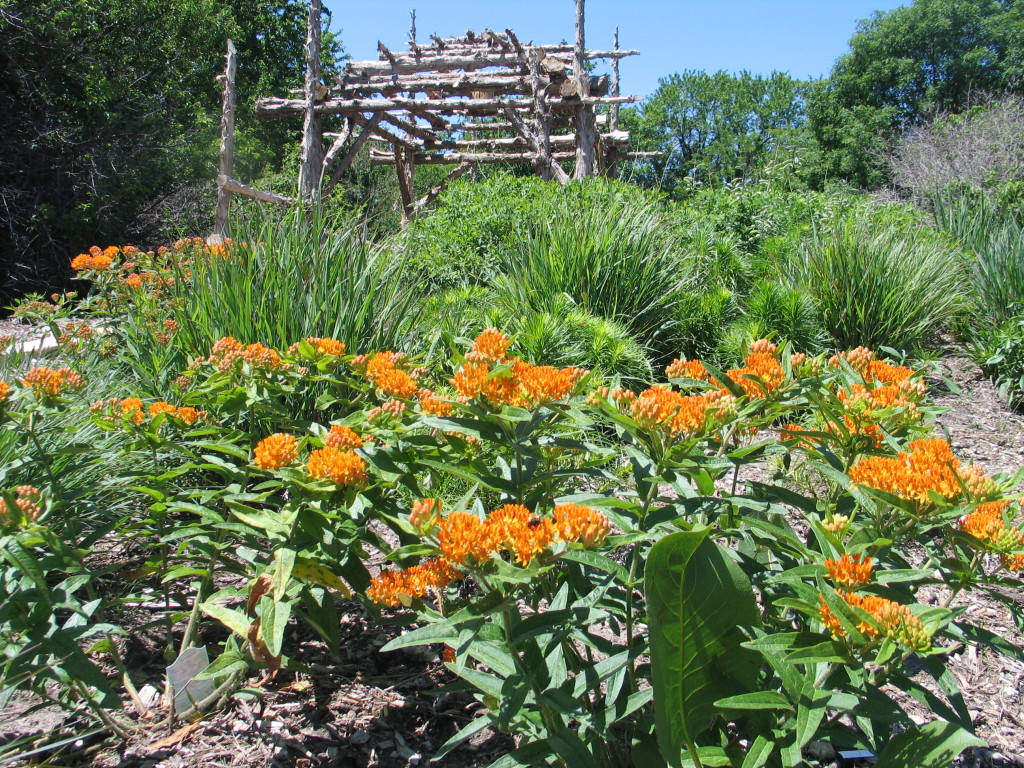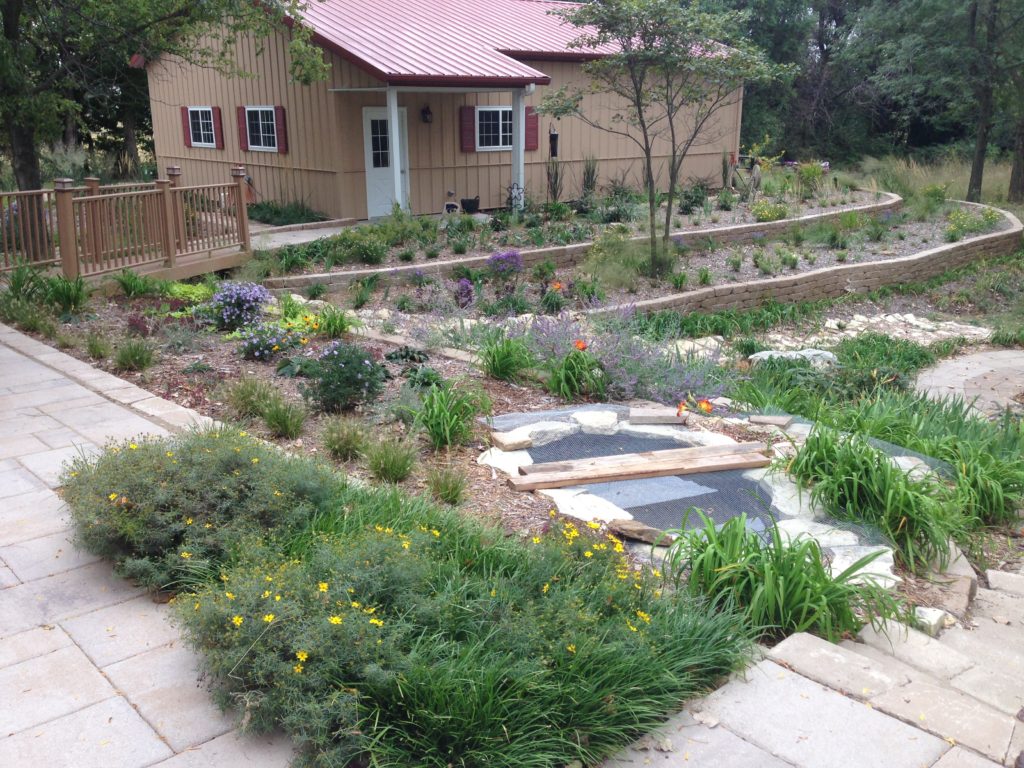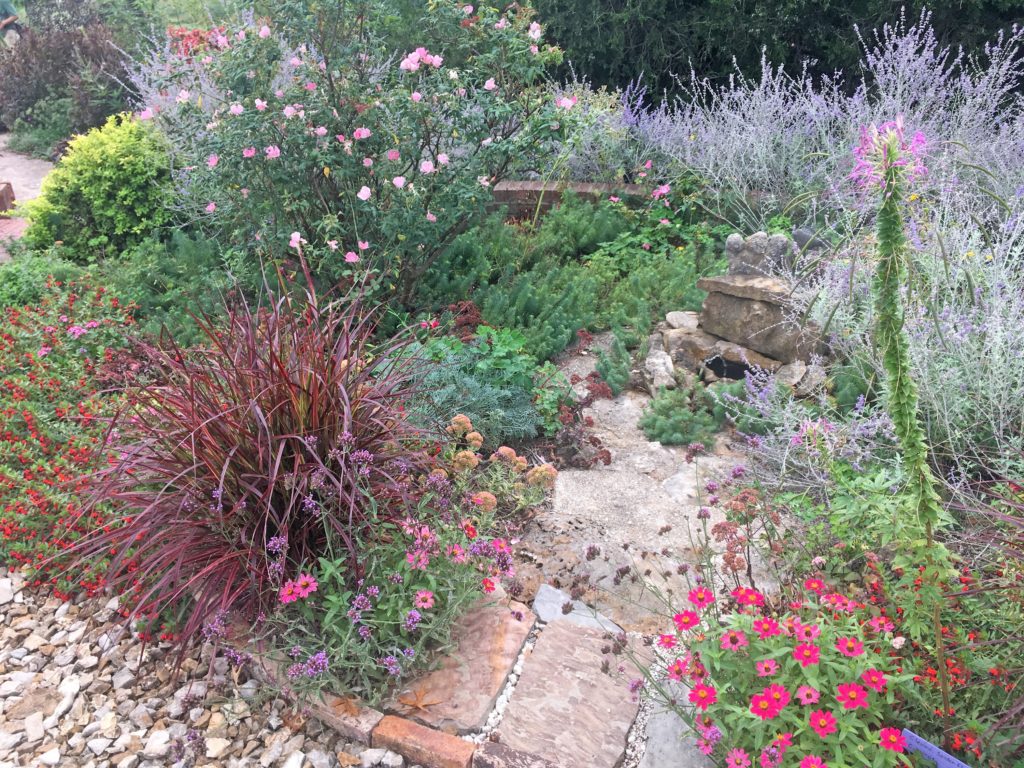We are coming to the end of another growing season in Kansas. Here at the Arboretum we have seen highs and lows as far as moisture is concerned, but all in all it has been a nice year. The grasses are at their peak now with beautiful plumage and incredible fall colors. As we prepare our gardens for winter, it’s a good time to evaluate how your garden performed this year and what it needs for winter or next year. Many gardens will need a fresh layer of mulch.

What needs to be mulched?
I typically focus on trees and shrubs because they benefit most from a new layer of mulch this time of year. I tend to only mulch perennial beds as they are initially planted. More recently, we are planting new beds denser (plants closer together) so that the lower ground level plants fill in and out compete the weeds, making a thick wood chip layer less necessary. In a prairie, there is no mulch in between the plants — low grasses, wildflowers and sedges cover the ground so weeds don’t germinate and cause problems. We are working to mimic that layered planting style.
What are the benefits?
Obviously, mulch is good at stabilizing soil temperatures which is important as colder weather sets in. It is also good for holding moisture and reducing weeds around the base of the trees and shrubs. Aesthetically, mulch gives your landscape a finished look that distinguishes it during all seasons of the year. An often overlooked benefit of mulch is that it keeps the mower and string trimmer away from the base of the plants. As the mulch slowly breaks down, it releases nutrients into the soil and increases the water holding capacity of the soil.
How much mulch is needed?
For trees and shrubs, I prefer to use between two and four inches of mulch. It is important to keep it away from the base of the trees and shrubs so insects and rot don’t become a problem at the stem or trunk. Please don’t create mulch volcanoes, which are death to trees. An evenly spread ring around the base of the plants, replenished regularly, will help them tremendously. For perennials, we only place one to two inches of mulch down and again we keep it away from the stems. This is fine as the beds are first established but as they mature, less mulch is needed because, with the right care, the plants become the mulch.

Should you use landscape fabric?
I am not a fan of landscape fabric. I have seen it do more harm than good especially for many of our native plants. One problem is that it keeps our clay soils too wet, leading to crown rot and other fungus growth. Using landscape fabric also makes it challenging to change your landscape plan in the future. As an alternative to fabric, we encourage the use of large pieces of cardboard covered by mulch. It still provides weed control during establishment but breaks down over time to be incorporated into the soil. Just slice holes in the cardboard to install your plants.

What type of mulch should be used?
Here at the Arboretum, we use wood chips from local tree trimming services. We like it too be fairly coarse so it breaks down slower and is less susceptible to wind. The type of mulch is not really important but texture is important. Finer mulches tend to cake up and seal off the soil which can be problematic to the plants root systems. Many municipalities have wood chip piles that can be loaded and used at little or no cost to you. Why spend money on fancy wood chips when you can get it for next to nothing? Most mulch looks the same after a few weeks in the sun anyway.

It is no secret that mulch is great for the landscape. There are so many benefits when you add it to your landscaping routine. A little work now will pay dividends next year.




